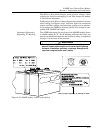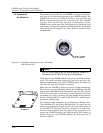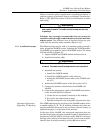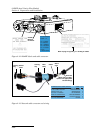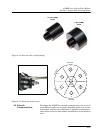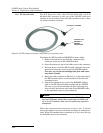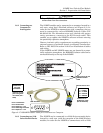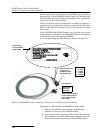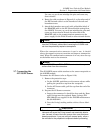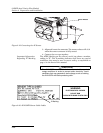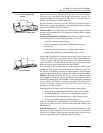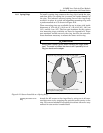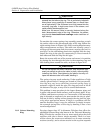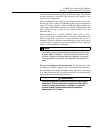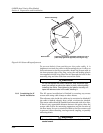
2150EX Area Velocity Flow Module
Section 2 Preparation and Installation
2-25
Use care, so you do not misalign the pins and cause any
short circuits!
4. Route the cable as shown in Figure 2-2, so the other end of
the EX Network cable is at the interface of the safe and
hazardous areas.
5. Attach the hazardous area end (with yellow/blue label) of
the RS485EX cable to the EX Network cable coming from
the 2150EX. Use care, so you do not misalign the pins and
cause any short circuits! Attach the other end of the
RS485EX cable to the communication connector on the
power supply for the Field Wizard or other network device.
Note
You can safely connect and disconnect the RS485EX cable
from the EX Network cable without removing the 2150EX mod-
ule from the potentially explosive atmosphere.
When the communication connector is not in use, it should
always be capped to prevent corrosion and improve communica-
tions. When the communication connector is in use, store the cap
on the holder next to the connector.
Note
Caps PUSH ON and PULL OFF. Do not rotate the caps to
remove them from the connectors.
2.7 Connecting the
AV2150EX Sensor
The AV2150EX sensor cable attaches to the sensor receptacle on
the 2150EX module.
To connect the AV Sensor (refer to Figure 2-19):
1. Remove the protective caps:
a. On the 2150EX, push down on the sensor release while
pulling the protective cap from the receptacle.
b. On the AV Sensor cable, pull the cap from the end of its
connector.
2. Prepare the AV Sensor connector:
a. Inspect the connector. It should be clean and dry. Dam-
aged O-rings must be replaced. Spare O-rings (P/N
202-1006-69) are supplied in the 2150EX maintenance
kit (60-2059-001).
b. Coat the O-ring’s sealing surface with a silicone lubri-
cant.
CAUTION
Do not use petroleum-based lubricants. Petroleum-based
lubricants will cause the O-ring to swell and eventually deterio-
rate. Aerosol silicone lubricant sprays often use petroleum
based propellants. If you are using an aerosol spray, allow a
few minutes for the propellant to evaporate before proceeding.



